After a series of crises, the UK’s biggest 150 food & drink manufacturers have shifted their sights from survival mode to the pursuit of greater profitability and investment in automation
After a white-knuckle ride through the pandemic, supply chain disruption and the cost of living crisis, Britain’s biggest food and drink companies have arrived at an inflection point.
Ahead of Rachel Reeves’ November budget, FDF research found confidence among manufacturers had fallen to its lowest point since Covid. Yet as this year’s ranking and report on the country’s top 150 food manufacturers from OC&C shows: when others hesitate, that’s the time for action.
“Yes, uncertainty remains, but if you wait for that to settle you’re going to be waiting a long time,” says Houlihan Lokey MD Garyth Stone.
It’s a lesson a number of suppliers have taken to heart in the last year when it comes to M&A. Take top-ranked Associated British Foods. The group struck a deal to buy Hovis in August and, earlier this month, revealed it is exploring a potential spin-out of Primark. Meanwhile Greencore (14) is on the verge of gaining approval for a merger with Bakkavor (10), and Premier Foods (22) is back on the acquisition trail
But it’s not just M&A. Pilgrim’s (2) had a tough year, lapping strong inflation-linked growth in 2023. But investment in a major restructure has boosted profits two years in a row. And after soft drinks giant Britvic (13) splashed out £20m on marketing to defy a tough market with 8.3% growth and 12% operating margin, it was snapped up by Carlsberg for £3.3bn.
“In 2020 and 2021, it was about growth at all costs – profitability would follow. If you were high-growth and online, not much else mattered,” adds Stone. “Now, profitability is much more important.”
Not everyone has managed to navigate the headwinds with ease. This year’s upsets included General Mills (86) – down 27 places thanks to stiff own-label competition hitting volumes – as well as Dale Farm (47), Baxters Food Group (64), Monaghan Mushrooms (90), Upfield (108) and Quorn (121).
The UK’s sluggish economy certainly has plenty of challenges left for suppliers. But after the shock of 2023’s high of 19% food priceinflation, input prices stabilised in 2024, and consumer confidence gradually recovered from the lows of late 2022, settling at a depressed but steady level.
A new normal
So the period of universal crisis looks to be over, for now. Instead, an uneven playing field has opened up, characterised by price spikes in individual categories linked to commodities such as cocoa, beef and coffee – in addition to a consistently higher cost floor from extra taxation.
“We’re getting towards a new normal,” says Will Hayllar, global managing partner of OC&C. “Pre-Covid, the world was globalising, and friction was being taken out of the system. Now, after lots of disruptions and spikes, the baseline for inflation going forward is higher.”
As well as rising labour costs, new taxes, tariffs, post-Brexit red tape and climate change also add to the challenge. With some degree of inflation a given, Hayllar says, the best performers are those that recovered margins. “In general, the stronger businesses do lead on inflation recovery. It’s often a sign of other underlying weaknesses when businesses or sectors are struggling to do that.”
Compleat Food Group
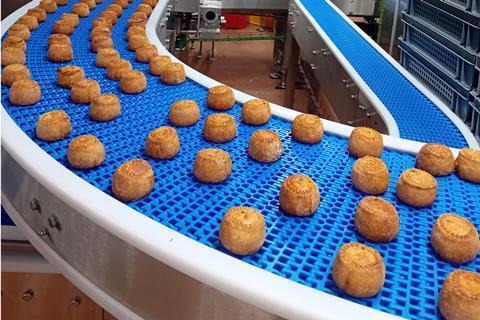
Sales: £773m
Operating margin: 5.8%
Compleat has delivered strong growth since its creation in 2021. Born in a merger of Addo Food Group and Winterbotham Darby, the predominantly white-label chilled producer has chased recent trends for premium ranges such as deli that tap desire for affordable indulgence. Recent restructures – like the closure of its Shaftesbury factory at the end of 2024 – have tightened costs, while new acquisitions and NPD under brands including Vadasz, Wall’s and Unearthed have helped push category growth.
Oversupplied categories, or those where a struggling competitor is willing to undercut peers, are where the “real problems” lie, he adds. That point may have been reached in plant bread, where inflation ratcheted up the pressure in a segment beset by declining volumes. ABF’s decision to swallow Hovis – pending CMA approval – was followed swiftly by the collapse of Roberts. With just Warburtons (30) and ABF as major players, profitability may now recover.
Despite the challenging environment, revenue growth among the top 150 is back to its long-term 4.8% average – though notably lower among the largest companies, which pushed through early price hikes in 2023.
Margins also continued to recover. At 5.7%, supplier operating margins rebounded from their 2022 low of 3.9%, giving suppliers greater security in taking on risk (supermarket average margins sit at 3.1%). But if suppliers are hoping to push through further price rises, they will have a difficult time persuading grocers, according to Bernstein analyst William Woods.
“In the past 12 months, suppliers have come back asking for more pricing, because commodities are going back up again,” he says. But in an era of depressed consumer appetite, retailers have become “more sophisticated”, finding it easier to dictate to suppliers what shoppers will accept. Tesco, for example, has talked proudly of its commodity analysis team that works out the true cost of chocolate or soap.
Signature Flatbreads
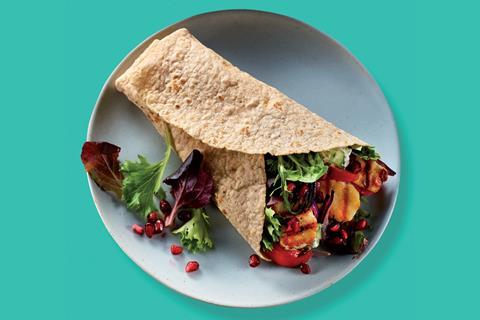
Sales: £331m
Operating margin: 18.2%
Demand for world breads has rocketed since the pandemic – and Signature Flatbreads has invested heavily to win over masses of new customers. Scaling production and efficiency with £100m of improvements at its east Dunstable site in a plan begun pre-Covid, the speciality baker has since launched a further £150m investment programme in the UK and India. Little wonder Signature has pumped out NPD with cleaner labels, plant-forward recipes and premium lines to grab 25% compound annual growth since 2020.
“Over the past 18 months, the balance [of power] has swung slightly in favour of the retailers. That’s probably because we’re going through another inflationary peak,” Woods adds.
The silver lining in this power struggle, says Kevin Moore, Valeo Foods UK CEO, is a squeezed industry working better than ever to build value throughout the supply chain.
“I’m having better conversations with retailers than I did 10 or 15 years ago, because everyone recognises dialogue is so important,” he says. “Value is created through collaboration, and every retailer is seeking to [collaborate] more effectively. It’s the manufacturer’s responsibility to make sure you’re really clear and transparent about how you create that value.”
Branded vs own label
Branded players such as Valeo (51) have managed to lift revenues faster than own-label rivals, reversing a trend seen in 13 of the past 20 years. Shore Capital’s head of consumer research, Clive Black, sees this as a natural consequence of the bump in supply-side costs.
“Proprietary brands have pricing power, and they tend to recover pricing much more quickly than private label,” he says.

Operating margins among branded players are now up to 9.6%, compared with private label’s 3.3%. But the faster branded recovery is a double-edged sword and may actually help out own-label companies in the long-run. Over the past decade, there has been a nearly 5% swing in grocery sales in favour of own brand. “And that’s partly because brand owners have over-recovered inflation,” Black argues.
Nestlé (11) is a case in point. It passed on big price rises on the back of severe cocoa inflation. But amid falling volumes new CEO Philipp Navratil has promised an acceleration of a turnaround plan to drive volumes, while cutting 16,000 jobs globally.
Nestlé is not alone in chasing unit sales. When price rises are increasingly tough to sell, it’s the best bet for growth. “Very few of the big staples companies can actually grow volumes at the moment, so promo is going up as well,” Woods says.
Price investments at Tesco and Sainsbury’s have focused on the centre-of-plate fresh foods, whereas Asda has cut prices on what Woods calls “the long tail of branded SKUs”, including Persil, Pampers and Philadelphia. Just 11% of the SKUs on offer in Asda’s early 2025 price war push were private label.

Valeo Foods
Sales: £533m
Operating margin: 5.6%
Valeo Foods’ strategic brand consolidation over the past two years has brought its 80-plus brands under unified leadership, rationalised SKUs and driven cost synergies. But the Bain-backed group’s acquisitive push to become a leader in sweet treats takes the biscuit. The company has won strong growth through HFSS-compliant reformulations, led on ‘better for you’ snacking and simultaneously launched indulgent formats to win premium spend – all helping Valeo double revenues since 2019.
While promotion is a “natural reaction” to dragging volumes, brands may be better served playing to strengths, says Moore, pointing out Valeo’s strategic refocus on sweet treats increased sales and profits.
“When you’re a manufacturer, being clearly known for something is important. Building authority with retailers is what gets you backed,” he says. “When I joined Valeo, we were a jack of all trades, master of none. In the past two years, we’ve been really selective about where to play and where not to play.
“That consistent line gives clarity to everybody, from the shop floor to the boardroom, and clarity is really important. Before that, Valeo was probably a bit lost.”
That same drive for ‘focus’ has led to a slew of reorganisations at major players, with Coca-Cola (6) looking to sell Costa, Unilever (12) spinning off its ice cream division and Kraft and Heinz (23) also uncoupling.
Without the same ability to price, or freedom to slim down already thin margins with promotion, some of the UK’s biggest own-label operators have suffered.
Pilgrim’s (2), Hilton Food Group (3) and Arla Foods (5) all lost sales. But room for growth remains. chilled food player Compleat Food Group (29) achieved 10.8% growth, and a healthy 3.3ppt jump in margin, through its ability to throw weight behind growing, lucrative categories. Boasting in-house manufacturing in the UK and a wider European network of specialist suppliers, Compleat has been able to handle demand for both entry-level items and premium goods.
“We proudly play in every tier, so there’s always a way for a consumer to buy into a category, no matter how affordable things are for you,” says Compleat CEO Nick Field.
Whereas own-label growth is “very much linked to affordability”, he sees great opportunity in areas that allow consumers to try out a range of different products. Deli goods, for example, driven by multibuy offers, are “really allowing consumers to buy into different trends and try new things”, he says. “That’s driving both volume and value, as well as interest and excitement for customers.”

Red Bull
Sales: £667
Operating margin: 8.2%
Sustaining double-digit growth since 2019, Red Bull seems to have followed its own advice and sprouted wings. The secret of its success has been massive, sustained investment behind the brand, which is now synonymous with some of the most exciting events in sports, music and gaming. What was already a functional product has likewise benefited from health trends, as NPD geared towards wellness brings in sales, alongside innovative flavours like Fuji Apple & Ginger.
Wanted: premium products
Compleat’s success in deli goods encapsulates one of the major engines of growth in the industry: demand for premium goods. In the first half of 2025, Tesco Finest sales were up 16% and Sainsbury’s Taste the Difference fresh sales jumped 18%. Branded players such as Charlie Bigham’s (where revenues are up 8.5%) have also done much to whet consumer appetites. First sparked by a “trading down” from bars and restaurants, the shift has become more about consumers seeing greater value in premium options at home, according to Black.
Low consumer confidence has only reinforced this behaviour, as shoppers pull back from larger purchases and instead spend on small, affordable luxuries. Add in the fact that about half of consumer salaries have beaten inflation and an opportunity opens up for grocers.
OC&C partner Nilpesh Patel explains: “You can get periods where the general outlook is quite gloomy: all the news headlines are about tax rises, slow GDP growth and trade wars – that’s bad if you’re trying to sell cars, houses or furniture – but if a big segment of people have slightly more money available each month because their pay rises have kept pace with inflation, they’ll keep spending.”
Branston
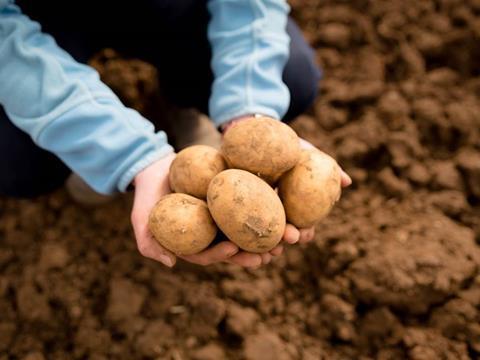
Sales: £226m
Operating margin: 2.5%
Private-label potato supplier Branston has worked with clients to take advantage of the uptick in demand for high-quality prepared lines like chilled mash, potato salad and ready-to-cook SKUs. Ecological innovations such as low-carbon storage and water recycling have also set it apart as an attractive partner – alongside investment in crop yields and potato shelf life that have helped Branston keep supply consistent year round. As a result, Branston has turned around from decline to growth of 25.7%.
Besides, Black adds, Brits tend to spend far less on groceries than their international peers – about 10% of their income – leaving room to trade up.
Innovation remains a key factor in the success of premium products, as consumer demand for novelty powers decision-making. The appetite for bringing exciting food ‘occasions’ into the home has benefited niche players like Signature Flatbreads (74), Grupo Bimbo-owned St Pierre and Geary’s as speciality bakery items gobble up plant breads’ share.
Sourdough challenger Geary’s, which makes Jason’s Sourdough, looks set to break into the Top 150 list in the near future after more than doubling turnover to £91.8m in 2024.
“A loaf of Jason’s might be more expensive than Hovis, but when compared to Gail’s, all of a sudden it looks like a bargain,” says Patel.
Capital expenditure
At a time when volumes are challenged, capital expenditure remains an important distinguisher. Warburtons, Signature and Geary’s have all invested heavily to bring new products into the market, with Signature putting £150m into its factories in 2024.
There are many other examples across the top 150, with capex jumping 2% to £2.3bn, and return on capital employed improved 2.9 points to 13.1%.
Indeed, Valeo’s recovery in the past two years is down to steady investment, according to Moore. “I can cut capex, I can take headcount out. I can go really hard, but what does that leave you with? It’s a very thin operating model that just doesn’t work, because at some point you have to put your foot on the accelerator again,” he says.
Since the pandemic, a new value-add has come to dominate shoppers’, and thus manufacturers’, thinking: health.

Huel
Sales: £213m
Operating margin: 7.5%
Huel reached profitability in 2024 off the back of massive revenue growth. Matching scale with disciplined cost control, the company has courted health trends by transitioning from a meal-replacement brand to multi-format nutrition, with new products including powders, RTDs and snack bars. Growth has stacked through the company’s omnichannel model, and its retail footprint now exceeds 1,000 outlets. Still more growth seems yet to come, as the company readies itself for the rise in GLP-1 adoption.
“Post-Covid, there’s just a greater awareness of mortality and being healthy,” says Huel CEO James McMaster. “It’s quite consistent globally and part of an amazing conversation that’s moving forward; it’s a really positive time to be a health and wellness brand.”
Founded in 2014, Huel (111) has enjoyed meteoric growth off the back of the trend, with sales of £213m in its latest results. And weight-loss drugs provide another opportunity.
“When you have a GLP-1, you’ve got people losing weight, so every calorie needs to count. They need a high-protein, high-fibre diet. Our product naturally suits it really well,” adds the Huel boss.
No stranger to disruption, McMaster is confident in the potential of GLP-1 drugs to shake up the wider grocery market. “There will be more products in supermarkets that are highly nutritious,” he says.
With such clear trends shaping Brits’ shopping habits, the opportunities are there for those with the foresight – and capital – to take them. But that’s easier said than done, and leading a business through continuing volatility in the most fiercely competitive retail market in Europe is not a job to be envied.
“Apart from a plague of locusts, British food manufacturers have faced just about everything,” says Black. “People have had to make quick decisions, because when one gets 20% cost inflation, one can’t sit around. Resilience and agility have become the default by design in the past decade – if businesses hadn’t adapted to all those macro moving parts, they’d probably have gone bust.”
Mergers & acquisitions: why optimism is finally prevailing
After two years of inflation-linked hesitancy, deals were squarely back on the menu in early 2025.
“Things were settling down, life became more predictable. That gave investors comfort,” says Houlihan Lokey MD Garyth Stone. “In the second half of 2024 and first quarter of 2025, there was an expectation that lots of deals were going to get done.”
Then came Donald Trump’s ‘Independence Day’. Despite few UK manufacturers actually exporting to the US, Trump’s tariff nightmare put another hold on dealmaking.
It was a shorter pause this time, though, and finally, after the summer, deals are being made again.
Greencore’s nod from the CMA, ABF’s purchase of Hovis, Newlat’s IPO of Princes, Premier back on the trail with Merchant Gourmet, Natures Way Foods being snapped up by California-based Taylor Farms – all point to an increased confidence in the UK industry’s ability to reward investment. More opportunistically, Warburtons and Boparan have also completed moves.
Part of the recovery is thanks to the return of private equity, according to Spayne Lindsay CEO Tom Lindsay.
“Has inflation really stopped strategic M&A? Not really. But interest rates, the consumer environment, energy prices, food inflation – it’s definitely put off PE,” he says.
Now less so. By October, 2025 had seen a greater number of PE deals compared with the same period in 2024, and PE’s share of disclosed deal values shot up to 34% after two years of negligible share.
Set against AI’s bull run, US food stocks have been “decimated” says Lindsay – hence the sudden urge for big companies to split up and find better shareholder value.
“It’s all about presenting something more attractive to shareholders,” Lindsay says.
Conglomeration remains an attractive angle, however, as groups try to find synergies. Hence Princes, Premier Foods, Compleat and Greencore making moves. Greencore expects £80m of synergies, worth more than half its 2024 EBITDA, from the merger with Bakkavor.
Headline-making deals only increase market confidence. And so, while volumes are still lower than average, it’s only a matter of time before confidence matures into more deals, according to Stone.
“We’re in a very positive, optimistic place right now,” he says.








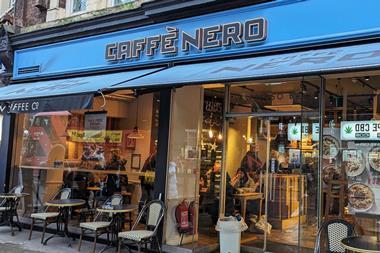

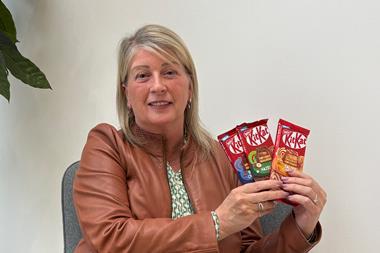
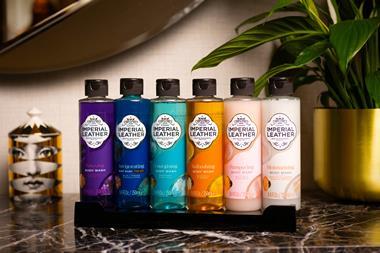
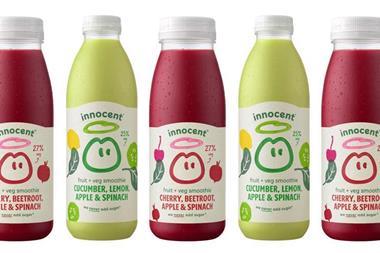






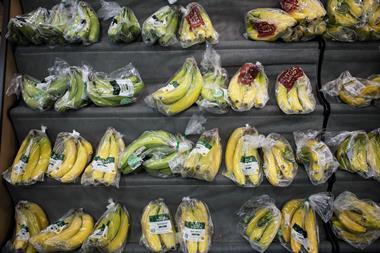
No comments yet